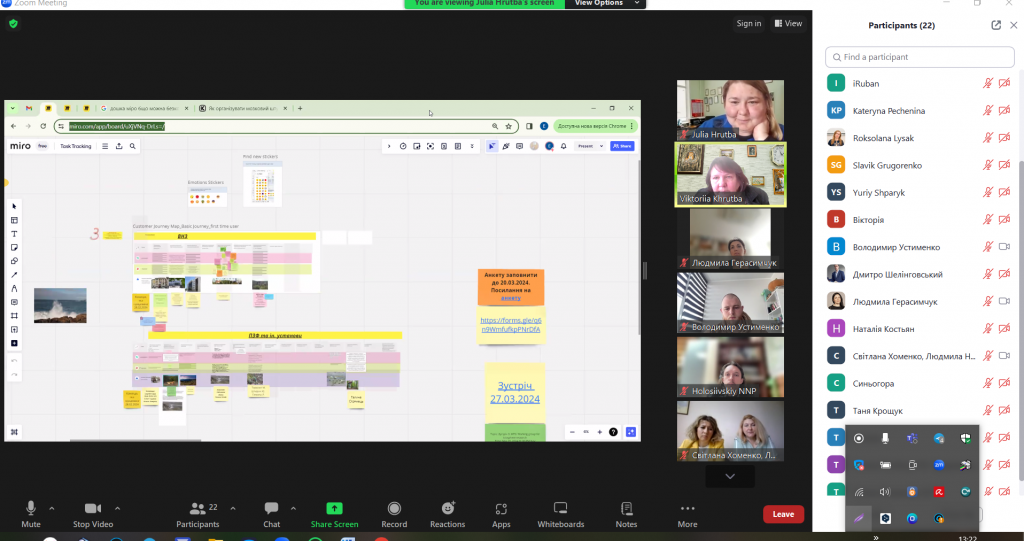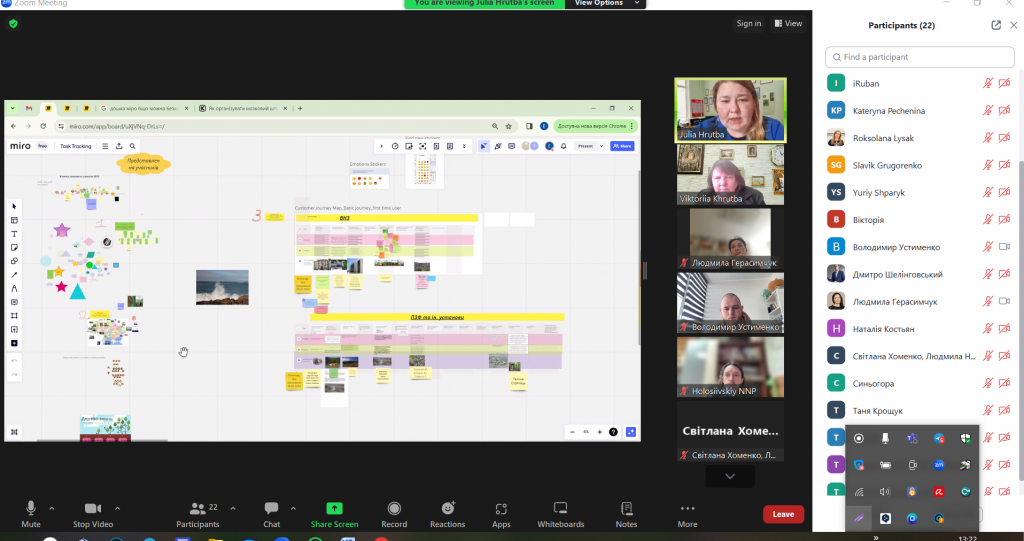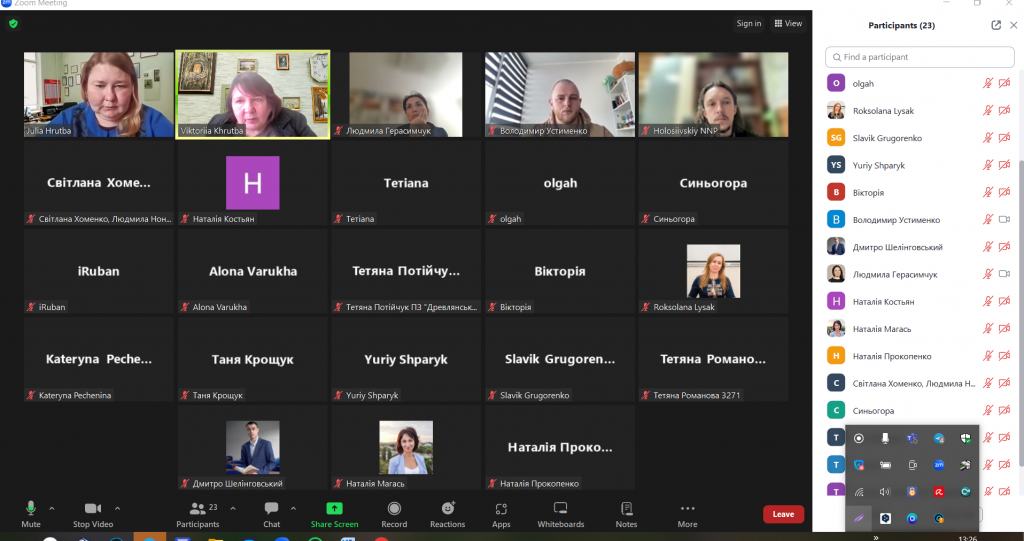On March 27, 2024, the third online working meeting of the WG3 working group took place. The purpose of the meeting was to acquaint the participants with the results of the survey conducted in the period from 11.03.24 to 20.03.24 and to analyze the results of the participants’ work with the Miro board.
The meeting was attended by teachers and students of partner universities – National Transport University, National Forestry University of Ukraine, Zhytomyr Polytechnic State University, Odesa State Environmental University, National Shipbuilding University named after Adm. Makarov, Kharkiv National Automobile and Road University and Pryazovsky State Technical University.
Specialists from the Holosiivskyi National Nature Park, the Chornobyl Radiation-Ecological Biosphere Reserve, the Desnyansko-Starogutskyi National Nature Park, the Carpathian Biosphere Reserve, the Sinyhora National Nature Park, the Buzkyi Gard National Nature Park, the Drevlyansky Nature Reserves and “Rostochcha” joined as well.
A total of 24 participants were present.
During the meeting, the participants were presented with the results of the survey conducted between March 11, 2024 and March 20, 2024.
The purpose of the survey was to determine the competencies, needs and goals for the joint work of nature protection institutions and higher education institutions. Questionnaire questions were divided into blocks. The first block of questions related to respondents’ contact data. The second is to determine the competence of the participants: the specifics of the activity, the experience of implementing projects, the experience of cooperation. The third block included questions about defining needs and goals for joint work. The fourth, fifth and sixth blocks were aimed at identifying how universities can support protected areas in general, how cooperation between universities and conservation institutions can be improved, and what ideas for joint projects between universities and conservation institutions the respondents have.
Representatives of different institutions could get acquainted with the goals, needs, experience and project ideas of each of them.
This way, it was possible to follow the formation of common interests of environmental institutions and higher education institutions in environmental education and research. The presentation was provided to all participants for further elaboration.
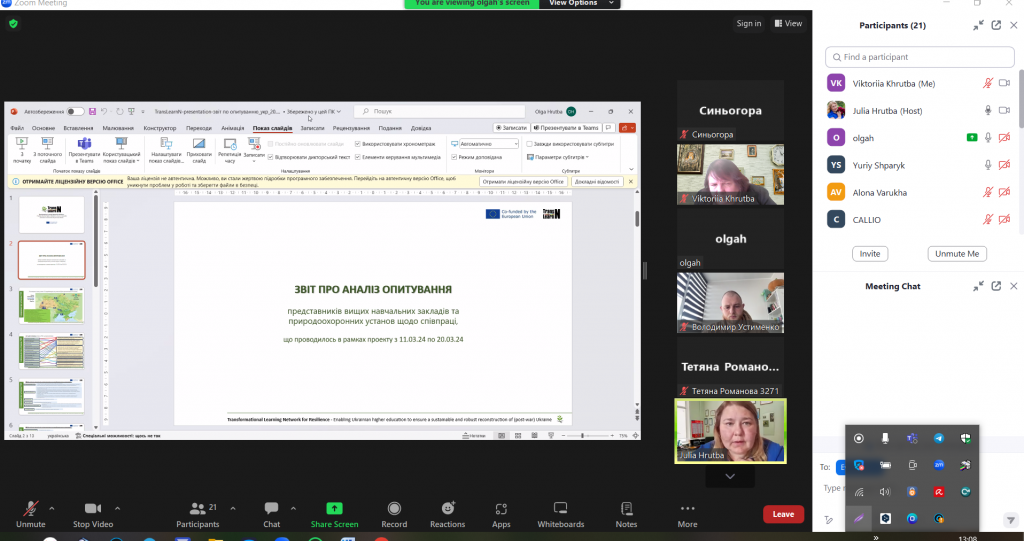
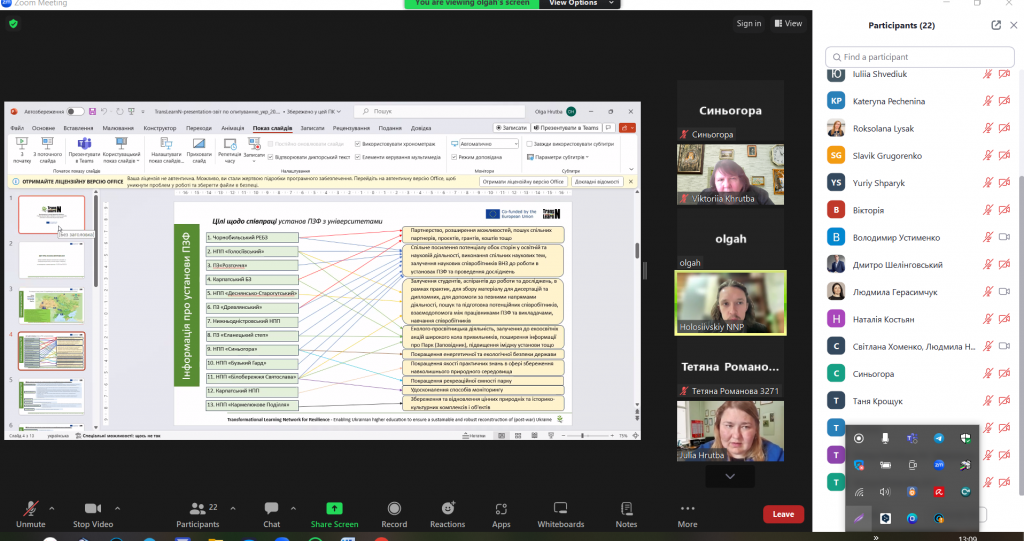
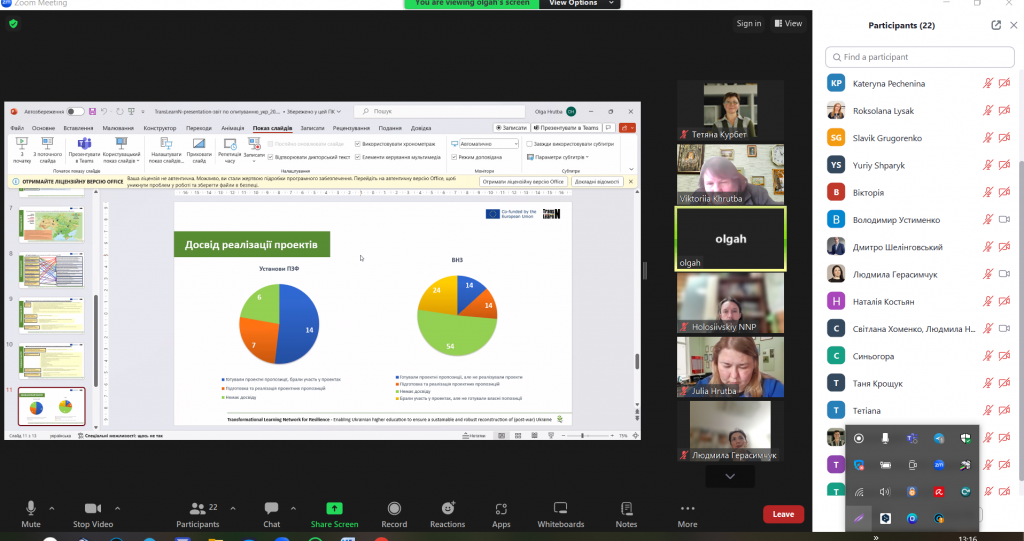
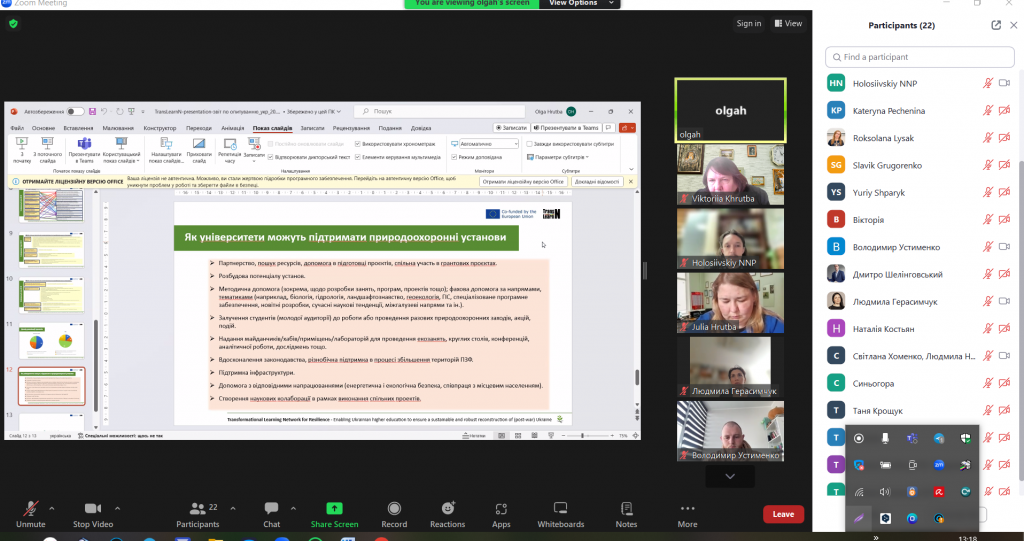
The interim results of the work with the Miro digital platform were summarised and the next task to be carried out with the working group members at the next meeting was announced. The participants also had the opportunity to consult on the current work with this platform.
